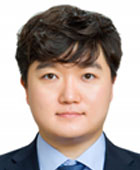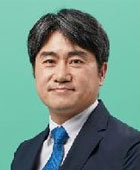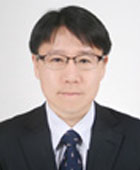
열-구조 연계 수치해석을 통한 금속 3D Printing 적층 해석
Abstract
The development in three-dimensional (3D) printing technology or additive manufacturing has provided a superior alternative to existing casting methods. However, the distortion and cracking due to residual stress and the direct measurement of the 3D printing process pose major challenges. Therefore, the finite element method (FEM) analysis was used to confirm changes in the variables having a major influence on the quality. The process of melting and solidification of the powder using a laser was simulated by constructing a thermal-structure two-way coupled analysis. The heat transfer and residual stress were confirmed to be produced by the laser heat input. Subsequently, the analysis model was verified by confirming that a phenomenon similar to the analysis occurred with the 3D printing specimen. Using this study, the residual stress and distortion are expected to be minimized while improving the production efficiency of 3D printing.
Keywords:
Finite element metod, Metal 3D printing, Residual stress, Coupled analysisAcknowledgments
본 연구는 산업통상자원부(MOTIE)와 한국에너지기술평가원(KETEP)의 지원을 받아 수행한 연구 과제입니다(No. 20206410100080).
References
-
Duda, T., Raghavan, L. V., 2016, 3D Metal Printing Technology, IFAC-PapersOnLine, 49:29 103-110.
[https://doi.org/10.1016/j.ifacol.2016.11.111]

-
Lim, K., Park, S., 2020, Mechanical and Physical Characteristic Analysis of Cranial Implants Manufactured through SLM and EBM Additive Manufacturing, J. Korean Soc. Manuf. Technol. Eng., 29:1 1-8.
[https://doi.org/10.7735/ksmte.2020.29.1.1]

-
Thomas, D. S., Gilbert, S. W., 2014, Costs and Cost Effectiveness of Additive Manufacturing, NIST Special Publication, 1176.
[https://doi.org/10.6028/NIST.SP.1176]

- ASTM, 2021, viewed 21 June 2021, Committee F42 on Additive Manufacturing Technologies, <https://www.astm.org/COMMITTEE/F42.htm, >.
-
Panwisawas, C., Tang, Y. T., Reed, R. C., 2020, Metal 3D Printing as a Disruptive Technology for Superalloys, Nat. Commun., 11:1 2327.
[https://doi.org/10.1038/s41467-020-16188-7]

-
Cheng, L., To, A., 2019, Part-scale Build Orientation Optimization for Minimizing Residual Stress and Support Volume for Metal Additive Manufacturing: Theory and Experimental Validation, Comput.-Aided Des., 113 1-23.
[https://doi.org/10.1016/j.cad.2019.03.004]

-
Xia, M., Gu, D., Yu, G., Dai, D., Chen, H., Shi, Q., 2017, Porosity Evolution and its Thermodynamic Mechanism of Randomly Packed Powder-bed during Selective Laser Melting of Inconel 718 Alloy, Int. J. Mach. Tools Manuf., 116 96-106.
[https://doi.org/10.1016/j.ijmachtools.2017.01.005]

- Jung, C., 2021, Thermal-structure Coupled Analysis Modeling and Design of Metal 3D Printing for Residual Stress Analysis, Doctorate Thesis, Ajou University, Republic of Korea.
-
Vastola, G., Zhang, G., Pei, Q. X., Zhang, Y. W., 2016, Controlling of Residual Stress in Additive Manufacturing of Ti6Al4V by Finite Element Modeling, Addit. Manuf., 12 231-239.
[https://doi.org/10.1016/j.addma.2016.05.010]

-
Robinson, J. H., Ashton, I. R. T., Jones, E., Fox, P., Sutcliffe, C., 2019, The Effect of Hatch Angle Rotation on Parts Manufactured using Selective Laser Melting, Rapid Prototyping J., 25:2 289-298.
[https://doi.org/10.1108/RPJ-06-2017-0111]

- Advanced powders, n.d., viewed 21 June 2021, Ti-6AI-4V Gr. 23, <https://www.advancedpowders.com/powders/titanium/ti-6al-4v-23, >.

Postdoctoral researcher in Department of Mechanical Engineering, Ajou University. His research interest is Metal 3D printing with FEM analysis.
E-mail: did9594@ajou.ac.kr

Professor in the Department of Mechanical Engineering, Ajou University. His research interest is design and control of precision system control.
E-mail: moongulee@ajou.ac.kr

Professor in the Department of Mechanical Engineering, Ajou University. His research interest is novel manufacturing processes.
E-mail: princaps@ajou.ac.kr